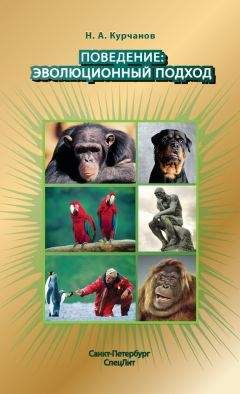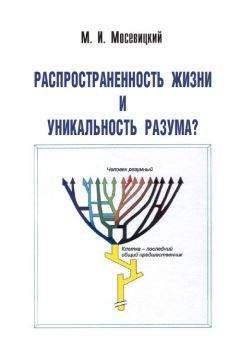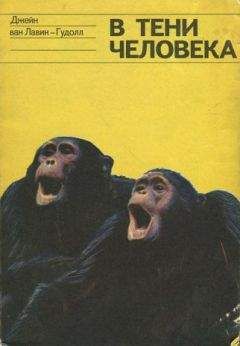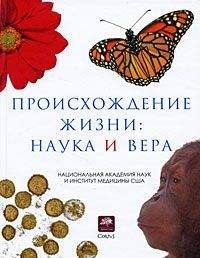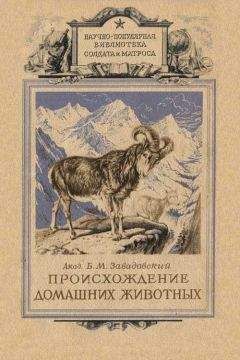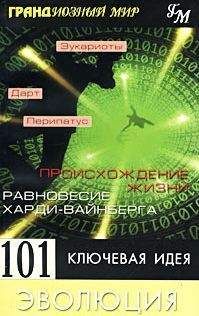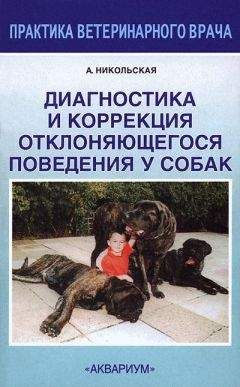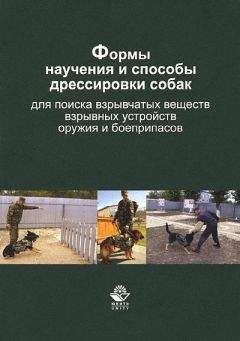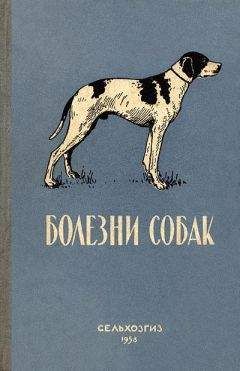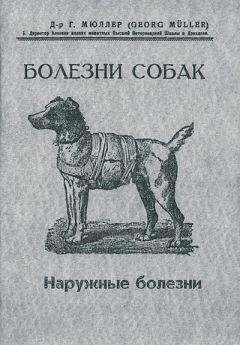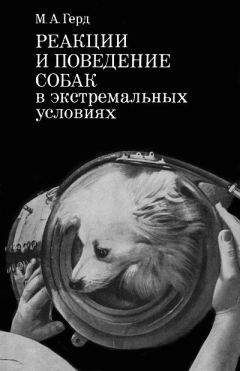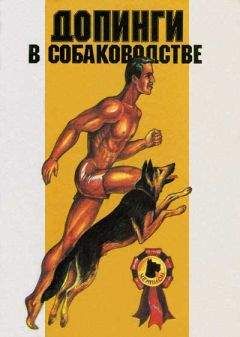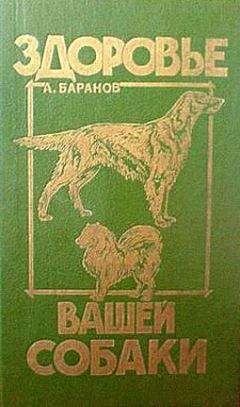Лорна Коппингер - Собаки. Новый взгляд на происхождение, поведение и эволюцию собак
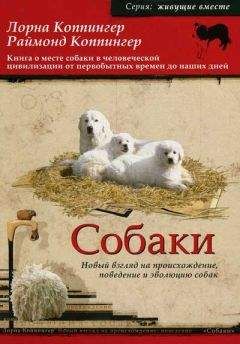
Скачивание начинается... Если скачивание не началось автоматически, пожалуйста нажмите на эту ссылку.
Жалоба
Напишите нам, и мы в срочном порядке примем меры.
Описание книги "Собаки. Новый взгляд на происхождение, поведение и эволюцию собак"
Описание и краткое содержание "Собаки. Новый взгляд на происхождение, поведение и эволюцию собак" читать бесплатно онлайн.
Авторы — супружеская чета Коппингеров — хорошо известны как среди специалистов по поведению животных, так и вне научных кругов — среди тех, кто занимается или интересуется собаками.
В книге обсуждаются:
— место собаки в истории человеческой цивилизации и его изменение в ходе истории от первобытных времен до наших дней;
— происхождение и эволюция собаки с объяснением форм, пород, биологического смысла породоспецифических особенностей;
— формирование специфического поведения собак различных пород с этологической и генетической точек зрения.
Как важное достоинство произведения следует отметить живой язык и своеобразный юмор авторов. Продемонстрировав нетривиальный научный анализ и несомненный литературный талант, авторы создали яркую и интересную книгу.
Предназначено для кинологов, этологов, экологов, антропологов, студентов ветеринарных факультетов и академий, а также для широкого круга читателей.
Пришло время, когда следует отказаться от точки зрения венца природы и перестать рассуждать о том, какая порода и какая собака лучше. Такой подход создал ловушку генетической изоляции. Хотелось бы ликвидировать эти ограничения «чистокровности». Это не значит, что надо смешать все породы и вернуться к первоначальной деревенской собаке. Но это значит, что необходимо ценить способности собак, их здоровье и чувства.
Истинная ценность любой собаки — будь то домашняя или служебная — в ее поведении. Как говорила моя бабушка, красив тот, кто красиво поступает. Лучше иметь маленькую собаку, чем длинную родословную. Хорошей собака становится после рождения, а не до. Нет генов хорошего домашнего любимца. Но есть породы, из которых просто не могут получиться домашние собаки, как их не воспитывай. Это те породы, которым свойственны определенные последовательности стереотипных форм поведения, не подходящие для домашних условий (см. гл. 6). Большая ошибка приобретать такую собаку для дома. И она, и ее владелец, скорее всего, будут несчастны.
Для большинства собак необходимо уделять внимание — и немалое — развитию в критический период социализации (с 1-й по 8-ю недели, а затем с 8-й по 16-ю), что является решающим для формирования хорошей собаки.
В процессе социализации и дрессировки помните, что собака — не волк.
И в то же время не забывайте, как сказал знаменитый канадский заводчик ездовых собак Эмиль Мартель, что «они всего лишь собаки».
Литература
Следующие книги и статьи были использованы при написании данного произведения:
Введение
1. Bekoff, Marc, and Colin Allen. 1992. Essay on contemporary issues in ethology. Ethology, 91, 1—16.
2. Coppinger, Raymond P., and Charles Kay Smith. 1990. A model for understanding the evolution of mammalian behavior. In Current Mammalogy, edited by H. Genoways. New York: Plenum Press.
3. Fentress, J.C., and P. McCloud. 1986. Motor patterns in development. In E.M. Blass (ed.), Handbook of Behavioral Neurobiology, vol.8: Developmental Processes in Psychobiology and Neurobiology. New York: Plenum Press: 35—60.
4. Fox, Michael W. 1963. Canine Behavior. Springfield, 111.: Charles С. Thomas. 1972. Understanding Your Dog. New York: Coward, McCann and Geoghegan.
5. Gould, James L. 1982. Ethology: The Mechanisms and Evolution of Behavior. New York: W.W. Norton.
6. Grandin, Temple, ed. 1998. Genetics and the Behavior of Domestic Animals. San Diego, California: Academic Press.
7. Grier, James W., and Theodore Burk. 1992. Biology of Animal Behavior. Second edition. St. Louis, Mo.: Mosby Year Book.
8. Lorenz, Konrad. 1954. Man Meets Dog. Boston: Houghton Mifflin Company.
9. Ollivant, Alfred. 1924. Bob, Son of Battle. Garden City N. Y: Doubleday Page.
10. Pryor, Karen. 1985. Don't Shoot the Dog! New York: Bantam Books.
11. Schneirla, Т.С. 1966. Behavioral development and comparative psychology. The Quarterly Review of Biology 41 (1): 283—302.
12. Scott, John Paul, and John L. Fuller. 1965. Genetics and the Social Behavior of the Dog. Chicago: The University of Chicago Press.
13. Serpell, James. 1995. Introduction to The Domestic Dog. In The Domestic Dog: Its Evolution, Behaviour, and Interactions with People, edited by J. Serpell. Cambridge, UK: Cambridge University Press.
14. Zimen, Erik, and Luigi Boitani. 1979. Status of the wolf in Europe and the possibilities of conservation and reintroduction. In The Behavior and Ecology of Wolves, edited by E. Klinghammer. New York: Garland STPM Press.
Глава 1
15. Belyaev, D.K. 1979. Destabilizing selection as a factor in domestication. Journal of Heredity 70: 301—8.
16. Belyaev, D.K., I.Z. Plyusnina, and L.N. Trut. 1984/85. Domestication in the silver fox (Vulpes fulvus desm): changes in physiological boundaries of the sensitive period of primary socialization. Applied Animal Behaviour Science 13: 359—70.
17. Belyaev, D.K., and L.N. Trut. 1975. Some genetic and endocrine effects of selection for domestication in silver foxes. In The Wild Canids, edited by M.W. Fox. New York: Van Nostrand Reinhold.
18. Brisbin, I.L. Jr. 1976. The domestication of the dog. Purebred Dogs: American Kennel Club Gazette 93: 22—29.
19. Coppinger, Raymond, and Charles K. Smith. 1983. The domestication of evolution. Environmental Conservation 10: 283—92.
20. Glutton-Brock, Juliet. 1995. Origins of the dog: Domestication and early history. In The Domestic Dog: Its Evolution, Behaviour, and Interactions with People, edited by J. Serpell. Cambridge, UK: Cambridge University Press.
21. Corbett, Laurie. 1985. Morphological comparisons of Australian and Thai dingoes: A reappraisal of dingo status, distribution and ancestry. Proceedings of the Ecology Society of Australia 13: 277—91.
22. Crisler, Lois. 1958. Arctic Wild. New York: Harper and Row.
23. Darwin, Charles. 1903. The Origin of Species. Facsimile of first edition (1859—60). London: Watts.
24. Davis, Simon J. M., and Frangois R. Valla. 1978. Evidence for the domestication of the dog 12 000 years ago in the Natufian of Israel. Nature 276: 608—10.
25. Fentress, John С 1967. Observations on the behavioral development of a hand-reared male timber wolf. American Zoologist 7: 339—51.
— 1973. Specific and nonspecific factors in the causation of behavior, In Perspectives in Ethology, edited by P.P.G. Bateson and R.H. Klopfer. New York and London: Plenum Press.
26. Frank, Harry, and Martha Gialdini Frank. 1982. Comparison of problem solving performance in six-week-old wolves and dogs. Animal Behaviour 30: 95—98.
27. Frank, Harry, Martha G. Frank, Linda M. Hasselbach, and Dawn M. Littleton. 1989. Motivation and insight in wolf (Canis lupus) and Alaskan Malemute (Canis familiaris): visual discrimination and learning. Bulletin of the Psychonomic Society 27 (5): 455—58.
28. Gallon, Francis. 1908. Domestication of animals. In Inquiries into Human Faculty and Development. London: J.M. Dent and Co.
29. Goodmann, Patricia A., and Erich Klinghammer. 1985. Wolf ethogram. Battle Ground, Ind.: Wolf Park.
30. Gould, Stephen Jay, and Elisabeth Vrba. 1982. Exaptation-a missing term in the science of form. Paleobiology 8 (1): 4—15.
31. Herre, W., and M. Rohrs. 1977. Origins of agriculture. In World Anthropology, edited by C.A. Reed. The Hague: Mouton.
32. Klinghammer, Erich, and Patricia Ann Goodmann. 1987. Socialization and management of wolves in captivity. In Man and Wolf, edited by H. Frank Dordrecht. The Netherlands: Dr. W. Junk Publishers.
33. Klinghammer, Erich. 1994. Imprinting and early experience: How to avoid problems with tame animals. Vol. 8, Ethology Series. Battle Ground, Ind.: North American Wildlife Park Foundation.
34. Kohane, M. J., and P.A. Parsons. 1988. Domestication: Evolutionary change under stress. Evolutionary Biology 23: 31—48.
35. Lewin, Roger. 1988. A revolution of ideas in agricultural origins. Science 240: 984—86.
36. Manwell, Clyde, and С. М. Ann Baker. 1983. Origin of the dog: From wolf or wild Canis familiaris. Speculations in Science and Technology 6 (3): 213—24.
37. Meggitt, M. J. 1965. The association between Australian Aborigines and dingos. In Man, Culture, and Animals, edited by A. Leeds and A.R. Vayda. Washington, D. C.: American Association for the Advancement of Science.
38. Oppenheimer, E. C, and J.R. Oppenheimer. 1975. Certain behavioral features in the pariah dog (Canis familiaris) in West Bengal. Applied Animal Ethology 2: 81—92.
39. Parsons, Peter A. 1997. Stress-resistance genotypes, metabolic efficiency and interpreting evolutionary change. In Environmental Stress, Adaptation and Evolution, edited by R. Bijlsma and V. Loeschcke. Boston: Birkhauser.
40. Price, Edward O. 1998. Behavioral genetics and the process of animal domestication. In Genetics and the Behavior of Domestic Animals, edited by Temple Grandin. San Diego: Academic Press.
41. Scott, John Paul. 1968. Evolution and domestication of the dog. Evolutionary Biology 2: 243—75.
42. Scott, John R. 1959. The inheritance of annual breeding cycles in hybrid basenji-cocker spaniel dogs. The Journal of Heredity, 255—61.
43. Smith, Charles K. 1970. Logical and persuasive structures in Charles Darwin's prose style. Language and Style, Fall: 243—73.
44. Trut, Lyudmila N. 1999. Early canid domestication: the farm-fox experiment. American Scientist, March-April, 160—69.
45. Woolpy, Jerome H., and Benson E. Ginsburg. 1967. Wolf socialization: A study of temperament in a wild social species. American Zoologist 7: 357—63.
46. Zeuner, Frederick E. 1963. A History of Domesticated Animals. New York and Evanston: Harper and Row.
47. Zimen, Erik. 1981. The Wolf: A Species in Danger. New York: Delacorte Press.
— 1999. An animal changes the world: the domestication of the wolf. Paper read at Wolf amp; Co. international Symposium on Canids, at Cologne, Germany.
Глава 2
48. Beck, Alan M. 1973. The Ecology of Stray Dogs: a Study of Free-ranging Urban Animals. Baltimore: York Press.
49. Bekoff, M. 1977. Mammalian dispersal and the ontogeny of individual behavioural phenotypes. American Naturalist 111: 715—32.
50. Blunder, Mark, and Roger Byrne. 1991. The ecological genetics of domestication and the origins of agriculture. Current Anthropology 32 (1): 23—54.
51. Boitani, Luigi, Francesco Francisci, Paolo Ciucci, and Giorgio Andreoli. 1995. Population biology and ecology of feral dogs in central Italy. In The Domestic Dog: Its Evolution, Behaviour, and Interactions with People, edited by J. Serpell. Cambridge, UK: Cambridge University Press.
52. Carr, G.M., and D.W. Macdonald. 1986. The sociality of solitary foragers: A model based on resource dispersion. Animal Behaviour 35: 1540—49.
53. Corbett, Laurie. 1995. The Dingo in Australia and Asia. Ithaca: Comstock/Cornell.
54. Daniels, Thomas J. 1983. The social organization of free-ranging urban dogs. I. Nonestrous social behavior. Applied Animal Ethology 10: 341—63.
55. Daniels, Thomas J., and Marc Bekoff. 1989a. Population and social biology of free-ranging dogs, Canis familiaris. Journal of Mammalogy 70 (4): 754—62.
— 1989b. Spatial and temporal resource use by feral and abandoned dogs. Ethology 81: 300—312.
56. Feldmann, Bruce. 1974. The problem with urban dogs. Science 185 (4155): 3.
57. Frank, H., and M.G. Frank. 1982. On the effects of domestication on canine social development and behavior. Applied Animal Ethology 8: 507—25.
58. Lands, Margaret. 1981. Zoonotic diseases in the Canadian and Alaskan North. Inuit Studies 5 (2): 83—107.
59. Macdonald, David W., and Geoff M. Carr. 1995. Variation in dog society: Between resource dispersion and social flux. In The Domestic Dog: Its Evolution, Behaviour, and Interactions with People, edited by J. Serpell. Cambridge, UK: Cambridge University Press.
60. Plyusnina, I.Z., and L.N. Trut. 1991. An analysis of fear and aggression during early development of behavior in silver foxes (Vulpes vulpes). Applied Animal Behaviour Science 32: 253—68.
61. Yeager, Rodger, and Norman N. Miller. 1986. Wildlife, Wild Death. Edited by L.W. Milbrath, SUNY Series in Environmental Public Policy. Albany, N.Y. State University of New York.
Глава 3
62. Ash, Edward С. 1972 [1927]. Dogs: Their History and Development. Reissue ed. Two vols. New York: Benjamin Blom.
63. Brisbin, I. Lehr. 1977. The pariah: Its ecology and importance to the origin, development and study of pure bred dogs. Pure Bred Dogs: American Kennel Club Gazette, January, 27—29.
64. Glutton-Brock, Juliet. 1977. Man-made dogs. Science 197: 1340—1342.
65. Coppinger, Raymond, and Richard Schneider. 1995. Evolution of working dogs. In The Domestic Dog: Its Evolution, Behaviour, and Interactions with People, edited by J. Serpell. Cambridge, UK: Cambridge University Press.
66. Coppinger, Raymond, and Lorna Coppinger. 1998. Differences in the behavior of dog breeds. In Genetics and the Behavior of Domestic Animals, edited by Temple Grandin. San Diego: Academic Press.
67. Das, Gautam. 1998. Notes on the Indian «Pariah» dog (Indian Spitz) as a hunting dog. Merigal, October, 12—13.
68. Meyrick, John. 1861. House Dogs and Sporting Dogs: Their Varieties, Points, Management, Training, Breeding, Rearing and Diseases. London: John Van Voorst.
69. Stonehenge. 1872. The Dog in Health and Disease. Second edition. London: Longmans, Green, Reader, and Dyer.
70. Titcomb, M. 1969. Dogs and man in the ancient Pacific with special attention to Hawaii. Special Publication 59, Bernice P. Bishop Museum, Honolulu, Hawaii.
Глава 4
71. Andelt, William F. 1992. Effectiveness of livestock guarding dogs for reducing predation on domestic sheep. Wildlife Society Bulletin 20: 55—62.
72. Bailey, Ed. 1997/98. The fearful dog. Gun Dog, December/January, 41—44. — 1998. Another look at the 49th day. Gun Dog, April/May, 20—24.
— 1999. Giving pups a head start. Gun Dog, April/May, 24—27.
73. Bateson, Gregory. 1972. Metalogue: What is an instinct? In Steps to an Ecology of Mind. New York: Ballantine Books.
74. Bateson, Patrick. 1979. How do sensitive periods arise and what are they for? Animal Behaviour 27: 470—86.
75. Black, Hal L. 1981. Navajo sheep and goat guarding dogs: A new world solution to the coyote problem. Rangelands 3 (6): 235—38.
76. Black, H.L., and J.S. Green. 1985. Navajo use of mixed-breed dogs for management of predators. Journal of Range Management 38: 11—15.
77. Cairns, Robert B. 1966. Development, maintenance and extinction of social attachment behavior in sheep. Journal of Comparative and Physiological Psychology 62 (2): 298—306.
Подписывайтесь на наши страницы в социальных сетях.
Будьте в курсе последних книжных новинок, комментируйте, обсуждайте. Мы ждём Вас!
Похожие книги на "Собаки. Новый взгляд на происхождение, поведение и эволюцию собак"
Книги похожие на "Собаки. Новый взгляд на происхождение, поведение и эволюцию собак" читать онлайн или скачать бесплатно полные версии.
Мы рекомендуем Вам зарегистрироваться либо войти на сайт под своим именем.
Отзывы о "Лорна Коппингер - Собаки. Новый взгляд на происхождение, поведение и эволюцию собак"
Отзывы читателей о книге "Собаки. Новый взгляд на происхождение, поведение и эволюцию собак", комментарии и мнения людей о произведении.





